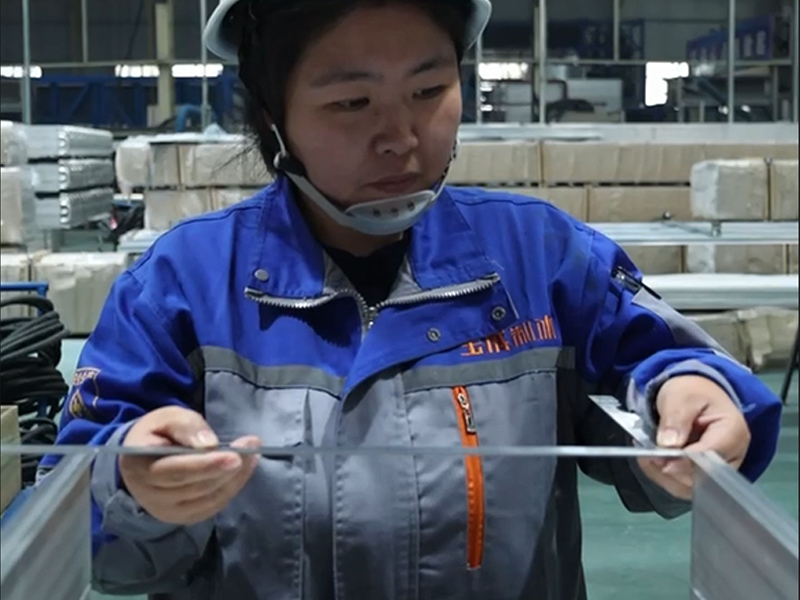Growth and Opportunities in the Ice Making Industry under China’s Belt and Road Initiative
Oct 29, 2024
In response to the Belt and Road Initiative, the global ice-making industry is experiencing unprecedented growth, especially for companies like BAOCHARM. This article explores how BAOCHARM’s industrial ice machines, including flake ice making machines, tube ice making machines, block ice making machines, and ice cube machines, are expanding across the global market. We will examine diverse applications, demand in key sectors, and the current opportunities and challenges facing BAOCHARM and similar companies in this fast-evolving landscape.
The ice-making industry, which traditionally served a few specialized markets, has broadened its reach due to technological advances and increased demand in new sectors. Key players, like BAOCHARM, are leveraging China's Belt and Road Initiative (BRI) to accelerate their international presence. By promoting trade and infrastructure connectivity among over 140 countries, BRI has facilitated market access and innovation opportunities for companies specializing in industrial ice machines. These trends highlight BAOCHARM’s strategic involvement and continued growth prospects in various regions globally.
As the world seeks sustainability and efficiency, BAOCHARM’s industrial ice solutions are becoming increasingly relevant. This article explores emerging market needs, global ice-making trends, and BAOCHARM’s development and opportunities amid both supportive policies and challenging global dynamics.
1. Market Demand for Industrial Ice Machines
The demand for industrial ice machines has grown well beyond traditional sectors. While established applications in fishing, agriculture, and medical transport remain strong, several emerging fields now benefit from industrial ice-making technologies:
Pharmaceutical & Biotechnology: Temperature-sensitive biological samples and medicines require precise cooling for transport and storage. Industrial ice machines ensure controlled temperatures in bulk, an essential aspect of pharmaceutical logistics.
Data Center Cooling: As data centers increase globally, the demand for efficient, large-scale cooling solutions rises. Ice-making technology offers effective cooling support in server environments, particularly in areas with unstable electricity supplies.
Environmental Research and Conservation: Industrial ice machines also support climate research by simulating icy conditions needed for experiments. Conservation efforts also leverage ice in the preservation of certain biological samples.
These diverse applications underscore the importance of ice-making technology in industries that were previously less dependent on artificial cooling.
2. Types of Ice Machines in Global Demand
The global ice-making industry demands varied machine types based on industry-specific cooling requirements. Key machines include:
Flake Ice Making Machine: Favored for quick cooling and even temperature distribution, flake ice is commonly used in seafood preservation and medical transport. This type of machine is essential in applications where gentle yet effective cooling is needed.
Tube Ice Making Machine: Known for producing slow-melting ice, tube ice is ideal for beverage production, hotels, and large events. Its cylindrical structure ensures even cooling in high-temperature environments, offering prolonged freshness for food and drink industries.
Block Ice Making Machine: Block ice’s durability and slow-melting properties make it essential for large-scale cooling needs. Commonly used in transportation and construction, block ice is a reliable choice for extreme climates and long journeys.
Ice Cube Machine: Popular in hospitality and consumer sectors, ice cube machines serve restaurants, hotels, and cafes, offering uniform, convenient ice suitable for beverages.
These machines cater to a global market, meeting the cooling demands across regions that require dependable and efficient ice-making solutions.
3. The Belt and Road Initiative: Opportunities and Benefits
China’s Belt and Road Initiative has enhanced BAOCHARM’s reach, facilitating trade, infrastructure, and technological exchange among participant countries. Under this initiative, BAOCHARM and other ice-making manufacturers enjoy:
Market Access: The BRI has opened doors for easier entry into Middle Eastern, Southeast Asian, and African markets, regions where demand for ice machines is rising rapidly.
Enhanced Infrastructure: Improved transport and supply chain routes reduce logistics costs and ease the transfer of equipment to new markets, enhancing BAOCHARM’s service to a broader client base.
Cross-Border Collaboration: The initiative encourages partnerships, fostering research and development in cooling technology tailored to regional needs.
BRI's infrastructure initiatives are instrumental in accelerating BAOCHARM’s export process, creating avenues for innovation and localized service expansion.
4. BAOCHARM’s Real-Time Global Development and Future Challenges
BAOCHARM has made significant strides in the global market, marking its presence with advanced ice-making solutions in over 30 countries. However, while the BRI facilitates BAOCHARM’s expansion, the global market presents both growth opportunities and complex challenges:
Opportunities:
Increasing Demand for Sustainable Cooling Solutions: Global interest in energy-efficient technology supports BAOCHARM’s focus on environmentally friendly machinery.
Customized Solutions: Different regions demand tailored ice solutions based on climate and industrial needs, allowing BAOCHARM to introduce specialized machines.
Challenges:
Regulatory Barriers: Each market presents unique regulations, from environmental standards to machinery certifications, potentially complicating international distribution.
Technological Competitiveness: Emerging markets have rapidly evolving demands, challenging manufacturers to innovate continually to stay competitive.
Economic Fluctuations: Economic instability in certain regions could impact market expansion, particularly in developing countries within the BRI framework.
Navigating these challenges requires BAOCHARM to maintain flexible production, a keen focus on innovation, and agile strategies to adjust to changing market dynamics.
5. Objective Insights on Market Potential
Industry data reveals an upward trend in the need for cooling solutions globally, with the demand for industrial ice machines projected to grow by over 10% in the next five years. This growth is influenced by:
Urbanization and Economic Growth: Rapid urbanization in Africa, the Middle East, and Southeast Asia is spurring food, beverage, and medical sectors, boosting the demand for reliable ice machines.
Climate Change Impacts: Warmer temperatures increase the need for cooling technologies, particularly in regions where high temperatures affect food storage and transport.
Sustainability Initiatives: With many industries pursuing greener solutions, energy-efficient ice machines are gaining popularity, providing BAOCHARM a competitive edge with its commitment to sustainable practices.
Conclusion
BAOCHARM’s ice-making machines, backed by the strategic framework of the Belt and Road Initiative, are well-positioned for significant growth. With an expanding global footprint and innovative solutions for industries ranging from fishing to pharmaceuticals, BAOCHARM is poised to meet the cooling needs of the future. However, global expansion is not without its hurdles, as regulatory challenges and market fluctuations require strategic agility.
Explore BAOCHARM’s industrial ice machines to find the right solution for your business’s cooling needs. Contact us today to learn how our innovative technology can help you achieve energy-efficient, reliable, and sustainable cooling, wherever your business operates.
Read More


